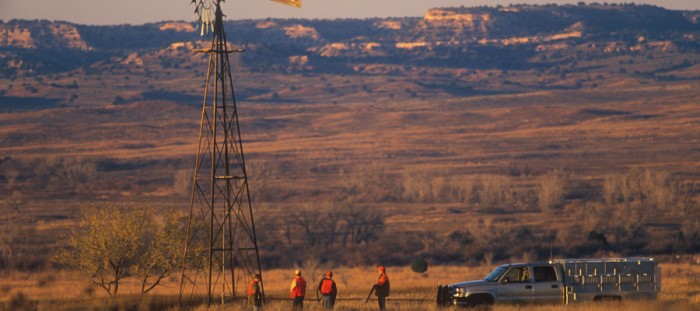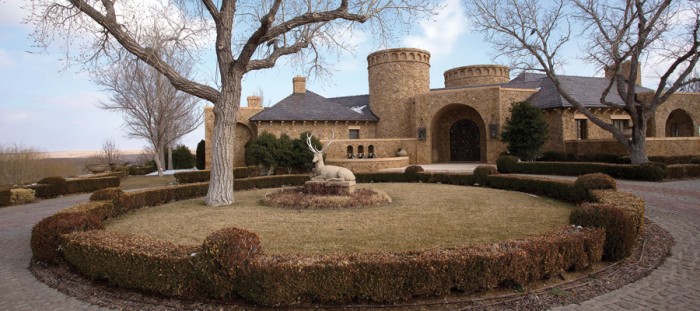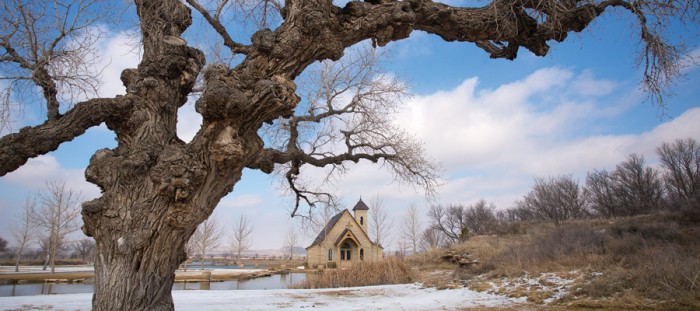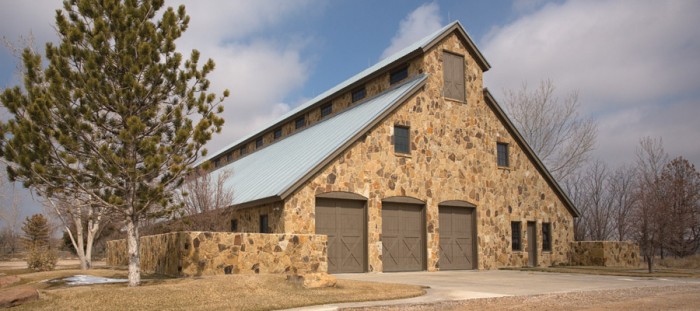We wanted to pass along a story written by Chad Love for our good friends at Covey Rise Magazine about the work that T. Boone Pickens has undertaken to reclaim an abused Texas panhandle landscape in order for quail to return and thrive.
Roberts County lies in the northeast part of the Texas panhandle, its 924 square miles of high, lonesome emptiness occupied by fewer than 1,000 hardy and independent souls. Some of the most extreme weather on the planet – tornadoes, drought, blizzards – can be found there.
It is also a place where the whims of man – mortal dreams writ both large and small – are often shattered upon the face of nature’s unyielding anvil. But there is one dream that, through sheer force of will, has not only refused to shatter but has grown into something unmatched in this world.
That dream is Mesa Vista Ranch, and the force of will that relentlessly forged it into existence belongs to T. Boone Pickens, who 42 years ago set out on what many thought a Quixotic fool’s quest: to shape and mold this harsh, abused landscape into a quail-hunting paradise the likes of which had never before been seen, to dare bend unyielding nature itself into his own unique vision of perfection.
Some said it couldn’t be done. And then T. Boone Pickens went out and did it. As it turns out, Mesa Vista is an apt metaphor for the man himself.
By now, the story of the legendary oilman, corporate raider, hedge-fund manager and clean energy advocate is well-known. Born in Holdenville, Okla., in 1928, Pickens graduated from his beloved Oklahoma State University in 1951 with a degree in geology. However, the prospect of a life spent looking at rocks apparently didn’t fit Pickens’ restless nature. So after 3 1/2 years of working for Phillips Petroleum, he quit and founded Mesa Petroleum, which would grow into one of the largest independent oil and natural gas companies in the U.S.
During the ’80s, Pickens became famous – some would say notorious – for his attempted takeovers of larger energy companies. In 1997 he founded the BP Energy Fund, which later became BP Capital Management, a multibillion-dollar energy investment fund that would make Pickens a billionaire.
But that’s just the broad overview. The real meat of Pickens’ life has filled several books. Like most true originals, Pickens is complex and fascinating, hard to nail down and even harder to summarize. But if you could pick one defining symbol, it would most likely be that small, unobtrusive ground-dwelling bird that drives the passions of so many kings and paupers alike – the bobwhite quail.
In 1940s and ’50s Oklahoma, bird hunting — not “quail hunting,” but “bird hunting” – was about as close to a non-religious religion as the state had. In those halcyon days before the long, slow decline of quail populations and the subsequent rise in competing activities like deer hunting, everyone was a bird hunter. Pickens’ family was no different. His father was an avid outdoorsman and quail hunter who always kept pointing dogs, and young Pickens inherited that passion. Throughout his career, his zest for business has been matched and exceeded by his passion, or perhaps more accurately, his obsession, for quail hunting.
It was while living in Amarillo that Pickens first hunted the area that would later become Mesa Vista. He came away impressed, and convinced that the Texas panhandle had the potential to be a better quail-hunting region than the much-more celebrated south Texas area.
To that end, in 1971 Pickens bought 2,900 acres of overgrazed Roberts County ranch land situated along the panhandle’s most dominant geographical feature, the Canadian River. It was a decidedly modest beginning to what would become a 100-square-mile quail empire.
“I was doing a lot of field work at the time, and I bought that first piece from a guy who was having some financial trouble,” recalls Pickens. “I got it for $69 an acre. I bought 10,000 more in 1982, then the next piece in 1988 and so on. I always envisioned having 100 sections, and then I started making money and wound up with 68,000 acres.”
Pickens says his wife wanted him to buy something in Vail, or maybe on a nice beach somewhere, but birds can’t be hunted in Vail or on the beach. So the man obsessed with bobwhite quail turned his back on the conventional trappings of wealth and instead set about creating his own.
It would be a daunting task. The Texas panhandle had birds, to be sure, but overgrazing had reduced much of the available habitat. Drought and bad weather often further decimated the population. Panhandle quail rode a roller-coaster along the razor’s edge of survival. The question was how to level out that roller-coaster. Unfortunately, the prevailing attitudes toward quail management at the time could be summed up thusly, “When it rains there’s quail and when it don’t, there ain’t, and there just ain’t nothing you can do about it otherwise.”
Pickens didn’t buy this argument, and thus began the great Mesa Vista Never-Ending Quail Experiment. Over the years the pace and breadth of this open-air laboratory experiment have waxed and waned with the tides of Pickens’ fortunes, but it all started from two basic premises: water and cattle. Namely, it was a helluva lot of the former, and damn few, if any, of the latter.
In theory, a quail’s needs are simple: food, water and cover. Give him those, and Bob should thrive. So Pickens began by drilling water wells, tapping into the vast Ogallala Aquifer and installing miles of underground water lines that fed tanks and overflow ponds. He gradually got rid of most of the ranch’s cattle to improve cover, and installed feeders to help bolster quail survival. Pickens, however, is always tinkering around the margins, trying something new. “We give them everything they need,” Pickens says with a smile. “Do that and the quail can take care of the rest.”?
The results of Pickens’ generosity speak for themselves. The birds are there. In fact, the birds are always there, year in and year out. They may dip in bad years, but a bad year on Mesa Vista is better than most good years anywhere else. The quail hunting is intensively managed and exhaustively recorded.
“We’ve averaged 1,000 to 1,500 birds per year every year since we started installing water lines,” says Pickens, “Some years a little less, some years a little more.” Considering the size of the ranch, it is lightly hunted, and many large chunks of it see neither dog nor hunter.
This wealth of wild birds and the natural cover to sustain them have also been a – pardon the pun – boon for quail researchers. Mesa Vista has participated in a number of quail research projects, and Pickens likes to point out that researchers have never had any problem trapping their quail quota off his ranch.
But Mesa Vista and T. Boone Pickens are about more than just great quail hunting. As the reality of Pickens’ original vision has grown over the years, so too has his commitment to bobwhite quail research and conservation. Pickens, as a member of the Dallas-based Park Cities Quail conservation nonprofit, has donated money and ranch access to ongoing research projects to organizations like the Rolling Plains Quail Research Ranch. But he also donates hunts to the chapter’s annual banquet that are routinely auctioned for hundreds of thousands of dollars. That money then is sunk back into research and conservation efforts.
His influence has led the chapter to name its top annual honor the T. Boone Pickens Award, given to sportsmen who have “distinguished themselves by living a life of adventure, love of the outdoors, respect for natural resources and most of all those who have demonstrated a spirit of giving back and making it possible for others to enjoy the sporting life.”
Such is the grandeur of Mesa Vista and T. Boone Pickens himself. But here’s the thing: While Pickens the persona may seem larger than life, Pickens the person is about as affable and down to earth as a farmer in a feed store. He will graciously sit down and, over a bowl of cereal, tell you a seemingly endless stream of ribald jokes, homespun homilies and what friends and family call “Booneisms” – pungent observations on the human condition.
For example, “If someone ever offers you a bird dog, don’t take it. You wouldn’t just give someone a bird dog that was actually worth a damn, would you? Hell no, you’d keep it yourself, so why would someone give one to you?”
He is justifiably proud of what he has accomplished, and at 84, Pickens is still a restless blur of motion and pure kinetic energy. He can effortlessly broker large deals over a cell phone with one hand while using the other to drive down a mud-slick ranch road, pointing out what he’s done and what he still plans to do. With a sharp, penetrating mind, he asks numerous probing questions, and a few minutes with him will make you wonder who is the interviewer and who is the interviewee.
And he is eminently, even legendarily practical and not much given to finery or ostentatious gestures. He could have any shotgun he wants, but he shoots a well-worn 20-bore Browning Superposed given to him by a friend in 1958. He could travel anywhere in the world, but when he’s not busy investing, preaching the gospel of clean energy or making media appearances, he relaxes and entertains at his favorite spot.
Such is the allure of Mesa Vista. Even forces of nature need respite, and over the years Pickens has shaped this unique spot into not only an engineering and wildlife conservation showcase, but also a personal sanctuary. It has gone from 2,900 worn-out acres acquired for $69 an acre in 1971 to paradise. And that’s exactly how T. Boone Pickens wants it. When asked if he ever travels to shoot quail, he replies, “Why would I? Oh, every now and then I’ll hunt somewhere else, but this is home.”
We would like to thank Covey Rise Magazine for allowing us to share this full published story with our subscribers. To check out previews of other great articles and some truly beautiful photography visit their website and consider subscribing to Covey Rise Magazine (www.coveyrisemagazine.com).
Photography by Terry Allen





